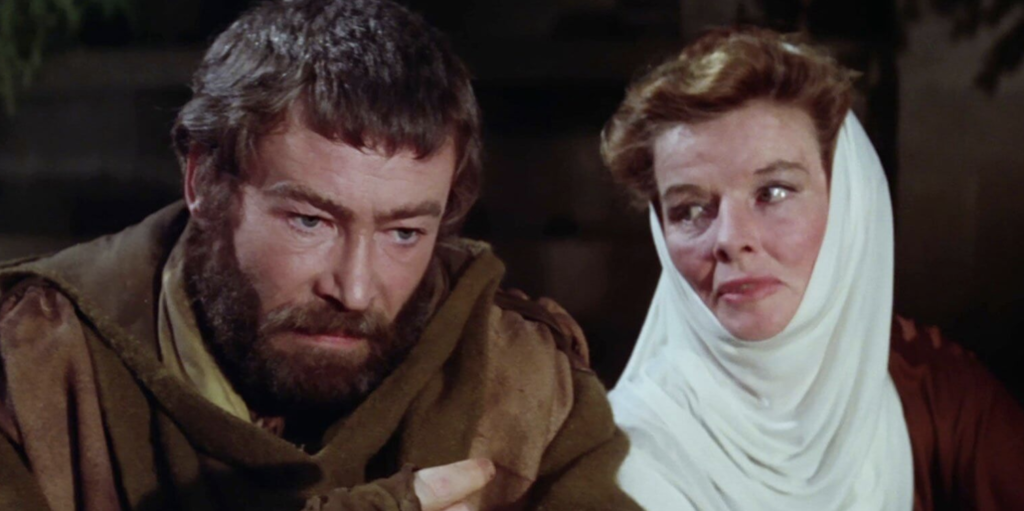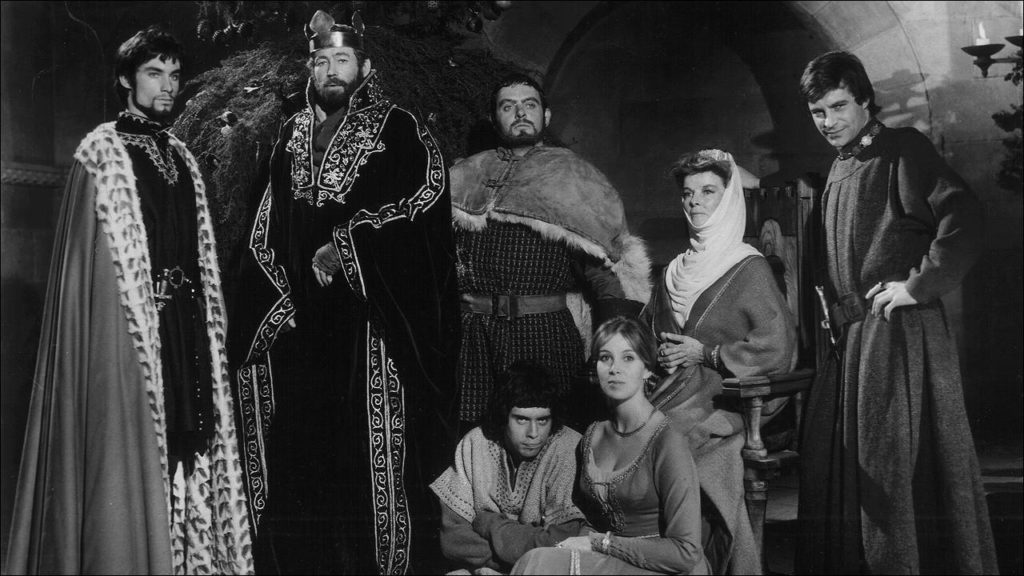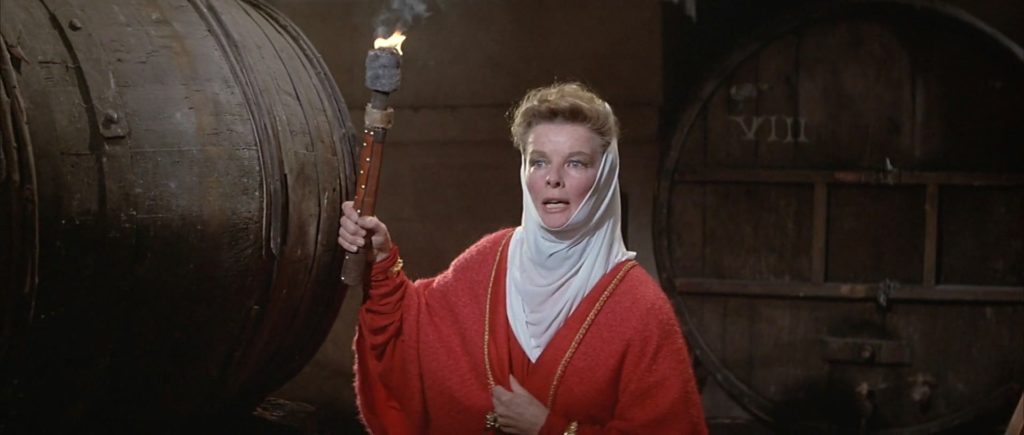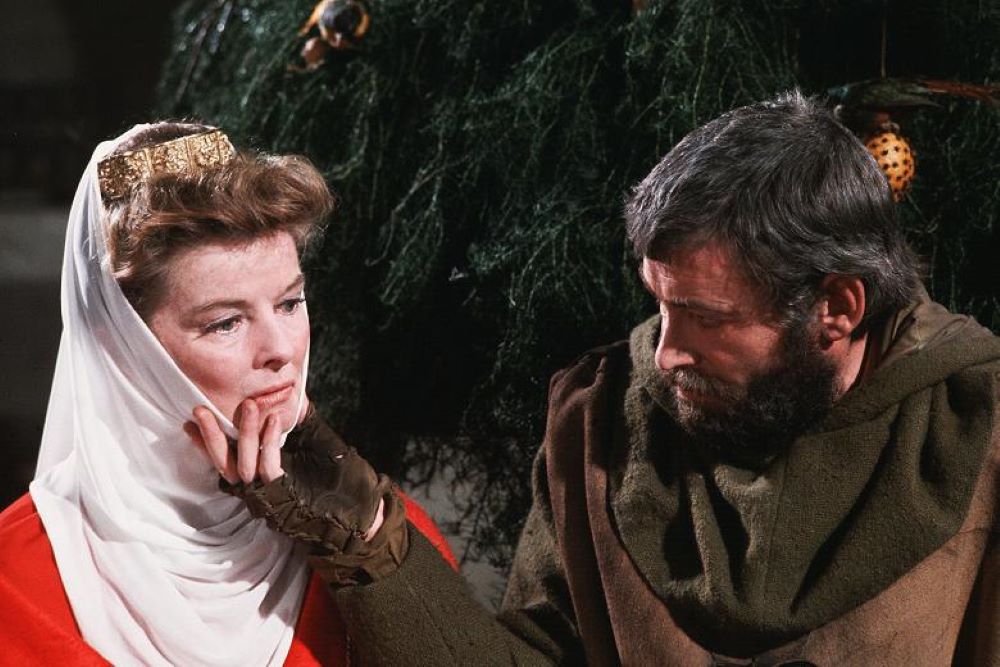| Liz Robau |

The Lion in Winter plays at the Trylon Cinema from July 2nd through July 4th. Visit trylon.org for tickets and more information.
King Henry is married to Queen Eleanor, with whom he had Richard, Geoffrey, and Johnny.
Richard, Geoffrey, or Johnny might soon be wed to Alais.
Alais is the elder half-sister of French King Philip.
King Philip is the son of dead King Louis.
King Louis was married some fifteen years to Queen Eleanor.
Queen Eleanor annulled her marriage to King Louis after meeting King Henry.
King Henry keeps Queen Eleanor locked in a castle and lives with his mistress, Alais.
Alais loves King Henry, but her feelings are beside the point.

The royal families celebrate by the Christmas tree.
Photo: Kobal via IMDB
All royals, old and young, are called by King Henry for an 1183 Christmas reunion in Chinon, France, where they’ll settle the terms of an overdue treaty: Alais’s hand for her land. The deal was forged sixteen years before, when Louis still reigned and Alais, aged seven, was sent to England as a kind of human deposit, to be raised by Queen Eleanor. Which son will get the bride, and—more to the point—their father’s kingdom? If Henry has his way, it will be Johnny, the slack-jawed epitome of a failson. If Eleanor has hers, it will be Richard, a soldier keener on King Philip than his sister. Geoffrey is the smartest of the three, but no one likes Geoffrey. Such is the donnée of The Lion in Winter (1968). Let the sibling derby begin.
Succession plots have a way of making anarchy look appealing. Why don’t the kings ever know when to fold ‘em? Why do we let these warmongers rule us? Why are their heirs always so unimpressive? The succession plot hasn’t changed much since 1183, and anyone who’s watched the Roys battle it out on this decade’s Succession (2018-2023)will be able to draw their own parallels—have at it.
As for myself, I’ll cop to feeling a bit successioned-out, so thank God for Katharine Hepburn, the Queen Eleanor to Peter O’Toole’s King Henry. The royal couple has been married 31 years. By her count, that’s enough time to bask in new love, birth batches of babies, find oneself scorned, have some affairs, and back a civil war or two against one’s husband. Her decade-long imprisonment may be debasing, but it isn’t baseless. Eleanor’s house arrest is a testament to their marriage of equals—nobody else requires such sedulous handling. Their children and lovers and allies and enemies are bit players in a war between spouses.

No one holds a candle to Katharine Hepburn.
At the time of the film’s production, Katharine Hepburn was 61 years old. She’d been acting in films since 1932, some 36 years, about the same length of time as Eleanor’s marriage to Henry. Lines bear down on her eyes and lips, a neck-shielding wimple is slung round her chin, and her rough, red mass of hair is pulled back. She’s beautiful, of course. As she’s rowed ashore to Chinon by ten oarsmen, jauntily waving from her high-backed chair, I feel sure that only a queen like that could thrive among the elements of the Middle Ages—you’d need her steeliness to sleep in stone castles, and preside over hay-floored banquets, and wade through all that mud, sand, and grass.
Character and actress begin to blur. Who has more vigor than Katharine Hepburn? How long can a silken-haired songbird like Alais last, unless she grows hard like Eleanor? Does the queen get all the best lines, or does Hepburn just deliver them with more long-voweled American enthusiasm than anyone else? It’s a delight to hear her berate her children (“My, what a greedy little trinity you are”), taunt her husband (“I wonder, do you ever wonder, if I slept with [your father]?”), and threaten her favorite (“Love me, little lamb, or leave me.”).

King Henry jerks Queen Eleanor’s chin.
Medieval England isn’t the New York City of 1949’s Adam’s Rib, in which Hepburn and her husband play opposing counsel by day and happily married by night, but the pitfalls of being the female half of a straight and adversarial couple look the same. Queen Eleanor is sly, but her husband has the upper hand in hurt. In a situation where an “I love you” can be a play, a dagger, or filler between schemes, it’s the official that counts. He could get an annulment and erase her existence, or stop trotting her out at Christmas and Easter, caging her in the castle forever. Why not? He loves Alais, and Alais could have sons. All Henry and Eleanor share is a sense of longevity, those 31 years.
“I hope we never die,” he tells her, near the end of their visit.
“I hope so, too,” she says.
The Lion in Winter understands: it is better to loathe someone after thirty-odd years than it is to feel nothing at all.
Edited by Olga Tchepikova-Treon
